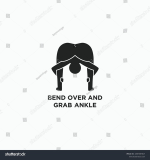signalmankenneth
Verified User
President Donald Trump says his new tariffs will punish other countries for unfair trade practices.
"Our country and its taxpayers have been ripped off for more than 50 years, but it's not going to happen anymore," Trump said Wednesday at a Rose Garden ceremony.
But some economists predict Americans will feel the pain – at least in the short term – and low-income Americans most of all.
Even as the stock market and consumer sentiment fall, the Trump administration is moving forward with 10% tariffs on imports from all trading partners outside Canada and Mexico, set to go into effect Saturday, plus additional duties on about 60 countries starting April 9.
U.S. trading partners are expected to retaliate.
At least some of the cost of these new taxes will be passed on to consumers, with the lowest-earning households expected to be dealt the biggest blow, according to a Wednesday analysis from Yale Budget Lab.
Households with an average disposable income of roughly $43,000, among the lowest in the country, would see disposable income drop 2.3% from the tariffs announced Wednesday versus 0.9% for the highest-earning households with disposable incomes above $500,000.
When accounting for all 2025 tariffs, disposable income is expected to drop 4% for the lower-earning households compared with 1.6% for the highest-earning.
"A tariff is what we call a regressive tax because it pinches families at the bottom more than it does families at the top," said Ernie Tedeschi, director of economics at the Yale Budget Lab.
Lower-income households are more exposed to tariffs relative to their incomes because they spend a greater share of their income, Tedeschi said.
"If you tax consumption, then you’re burdening those families more," he said.
In dollar terms, higher-income households get hit harder by the tariffs announced Wednesday: An average of $4,600 per household per year for those in the top tenth and $1,700 for those in the middle. That $1,700 represents a larger share of the middle-income household's disposable income.
The impact of tariffs would escalate over time for wealthier households as prices on assets such as stocks, bonds, and real estate decline, the Yale Budget Lab analysis showed.
With deregulation and government cutbacks, it has positioned the president’s tariff agenda as a growth engine propelling an American resurgence.
"These tariffs are going to give us growth like you haven't seen before," Trump said.
Peter Navarro, Trump’s senior counselor for trade and manufacturing, said Sunday that tariffs will bring in $6 trillion in revenue in the next decade.
https://www.yahoo.com/finance/news/impact-tariffs-coming-households-trumps-191042296.html

Short-term pain for long-term gain? Got KY jelly?!!
"Our country and its taxpayers have been ripped off for more than 50 years, but it's not going to happen anymore," Trump said Wednesday at a Rose Garden ceremony.
But some economists predict Americans will feel the pain – at least in the short term – and low-income Americans most of all.

Even as the stock market and consumer sentiment fall, the Trump administration is moving forward with 10% tariffs on imports from all trading partners outside Canada and Mexico, set to go into effect Saturday, plus additional duties on about 60 countries starting April 9.
U.S. trading partners are expected to retaliate.
At least some of the cost of these new taxes will be passed on to consumers, with the lowest-earning households expected to be dealt the biggest blow, according to a Wednesday analysis from Yale Budget Lab.
Households with an average disposable income of roughly $43,000, among the lowest in the country, would see disposable income drop 2.3% from the tariffs announced Wednesday versus 0.9% for the highest-earning households with disposable incomes above $500,000.
When accounting for all 2025 tariffs, disposable income is expected to drop 4% for the lower-earning households compared with 1.6% for the highest-earning.
Why low-income households would pay more
The products that would get more expensive for these households include food, clothing, energy, and electronics."A tariff is what we call a regressive tax because it pinches families at the bottom more than it does families at the top," said Ernie Tedeschi, director of economics at the Yale Budget Lab.
Lower-income households are more exposed to tariffs relative to their incomes because they spend a greater share of their income, Tedeschi said.
"If you tax consumption, then you’re burdening those families more," he said.
In dollar terms, higher-income households get hit harder by the tariffs announced Wednesday: An average of $4,600 per household per year for those in the top tenth and $1,700 for those in the middle. That $1,700 represents a larger share of the middle-income household's disposable income.
The impact of tariffs would escalate over time for wealthier households as prices on assets such as stocks, bonds, and real estate decline, the Yale Budget Lab analysis showed.
White House blames tariff 'fear mongering'
The Trump administration is betting any short-term pain will be worth it.With deregulation and government cutbacks, it has positioned the president’s tariff agenda as a growth engine propelling an American resurgence.
"These tariffs are going to give us growth like you haven't seen before," Trump said.
Peter Navarro, Trump’s senior counselor for trade and manufacturing, said Sunday that tariffs will bring in $6 trillion in revenue in the next decade.
https://www.yahoo.com/finance/news/impact-tariffs-coming-households-trumps-191042296.html

Short-term pain for long-term gain? Got KY jelly?!!
